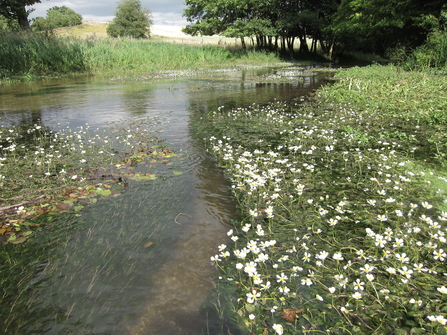Embrace the start of #30DaysWild by stepping into nature right outside your door. Walking is also a great way to connect with nature, moving at a pace where we can notice what grows, flows and moves around us. All of that has wonderful benefits for our wellbeing.
What could be nicer as the weather turns to put a spring in our step than to head out and explore our precious chalk rivers and the walking routes that run close to these internationally unique and most biodiverse of all UK rivers. Here, in Hertfordshire, we are blessed with 10% of the world’s total of these picture-perfect rivers, from babbling brooks and streams over gravel in the mid-west of our area, to the deep running clay catchment rivers of the east.
Here, Sarah Perry, our Rivers Catchment Coordinator has identified her top five places to see chalk rivers and links to some wonderful walks you can enjoy, not just during #30DaysWild, but anytime of the year.





